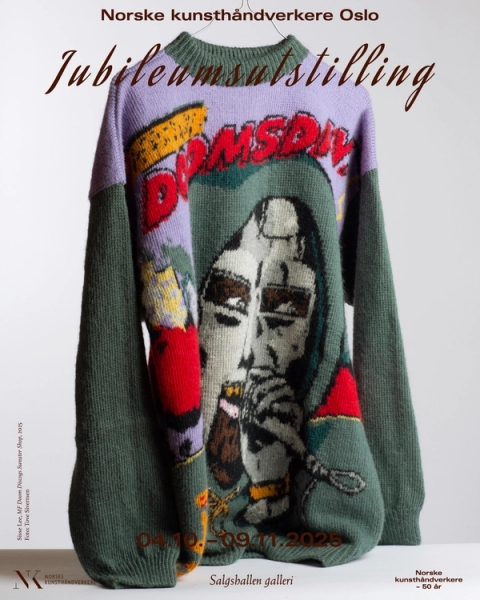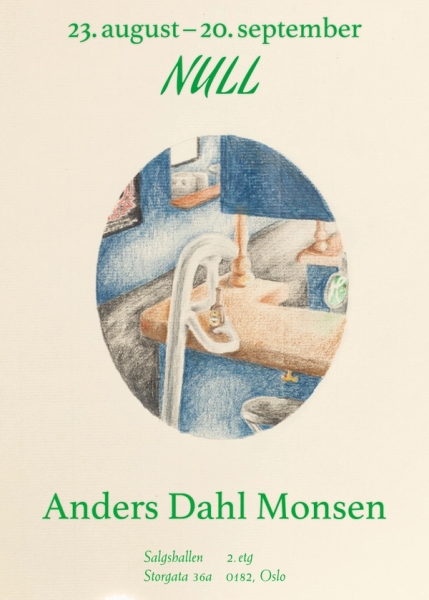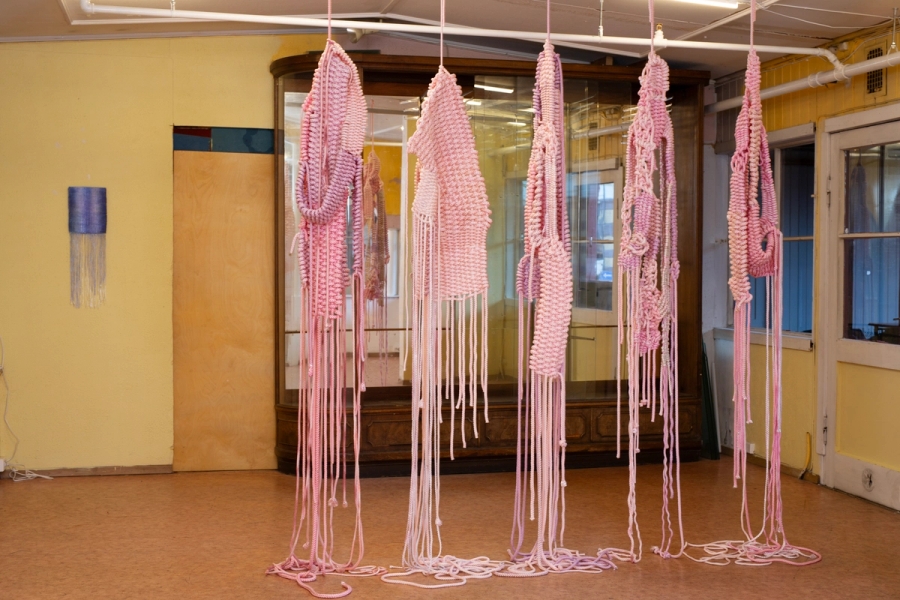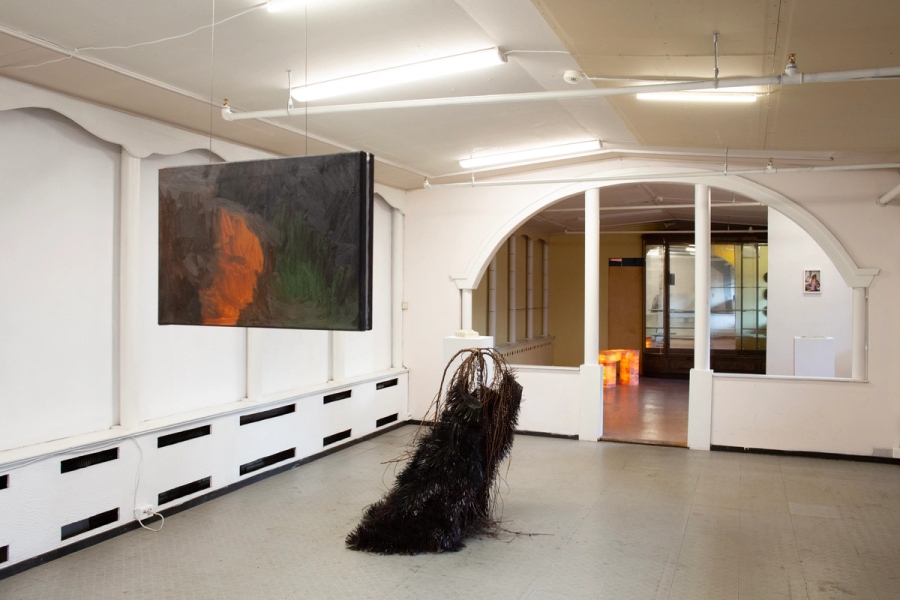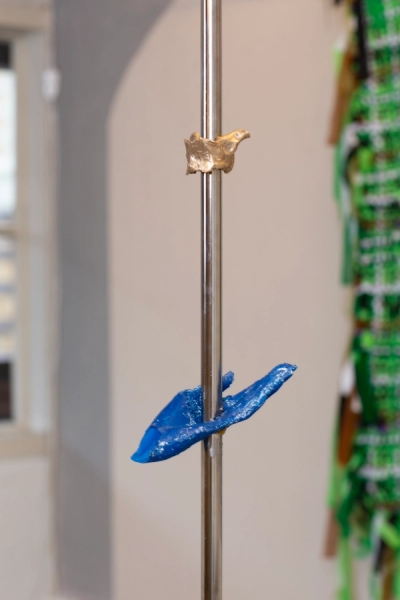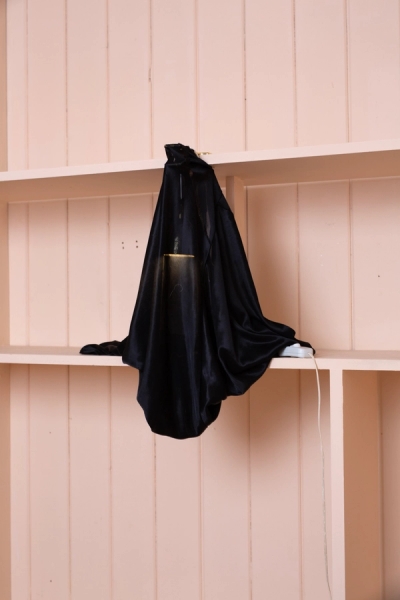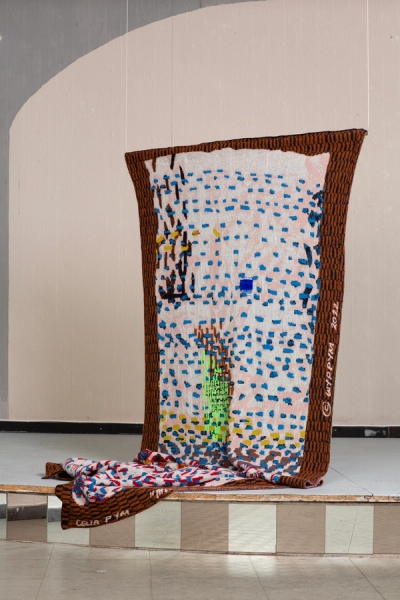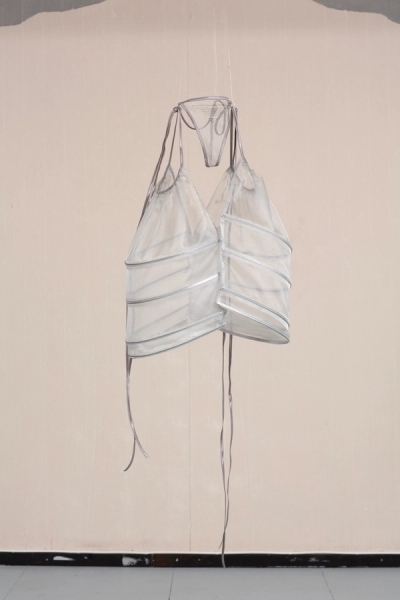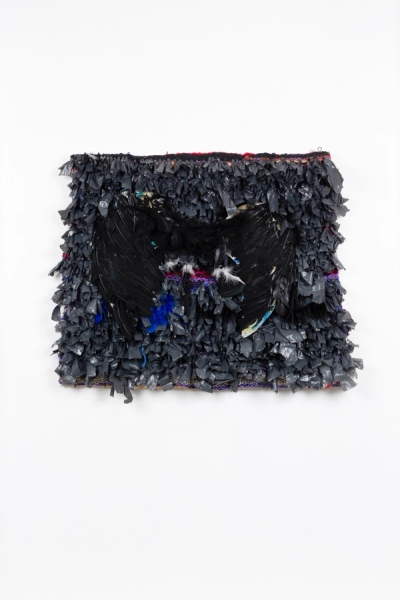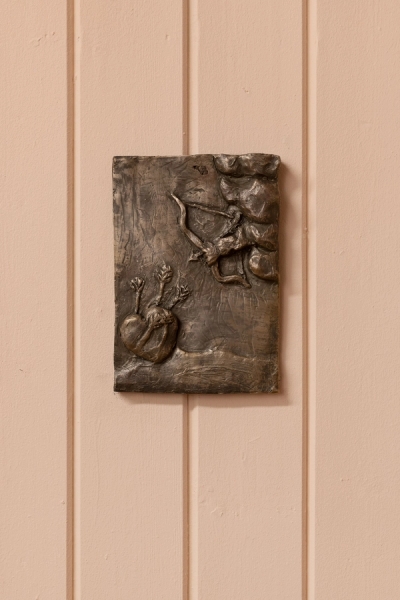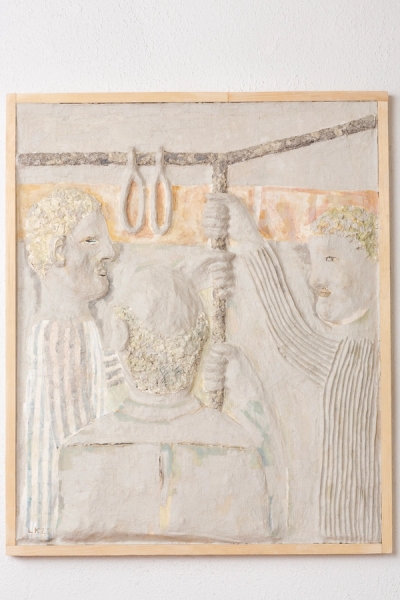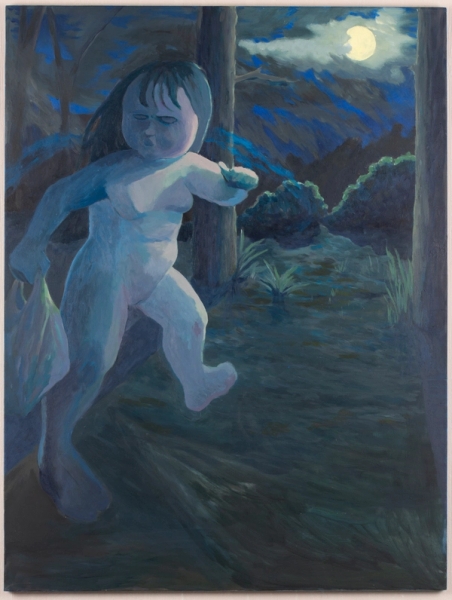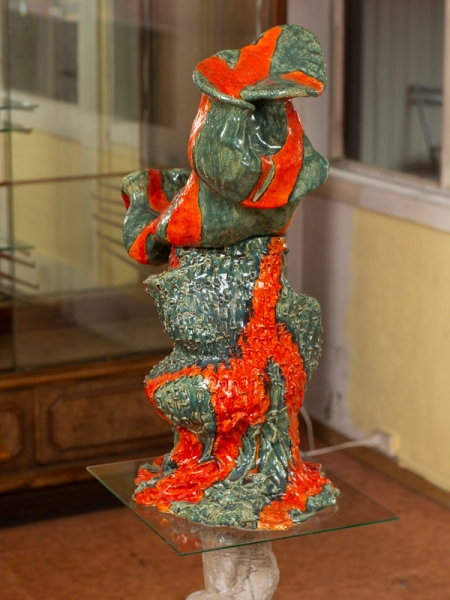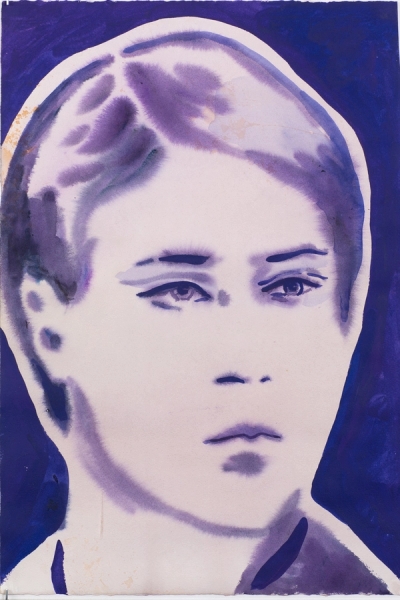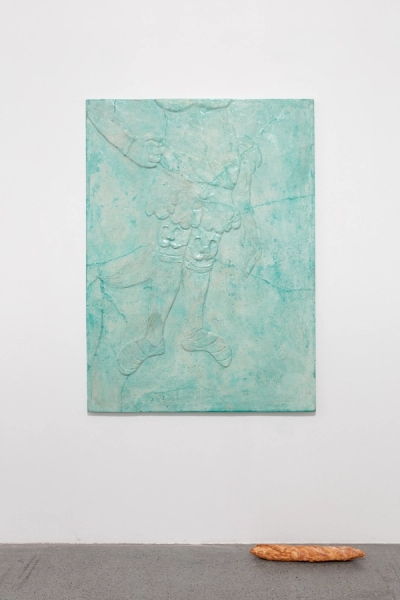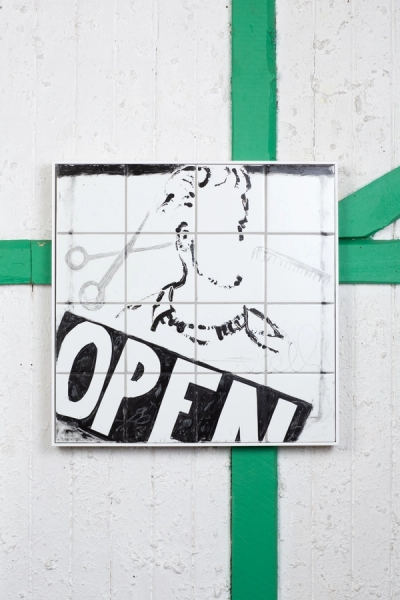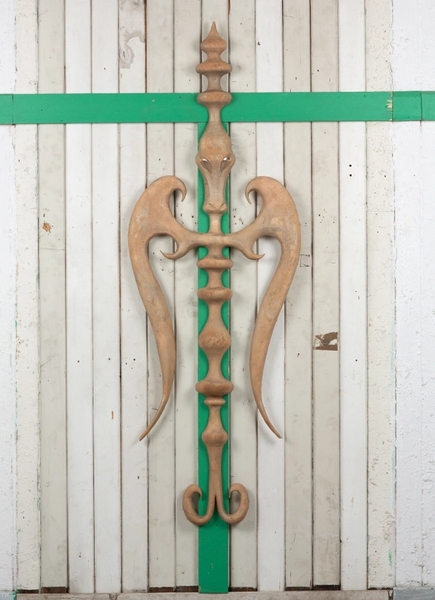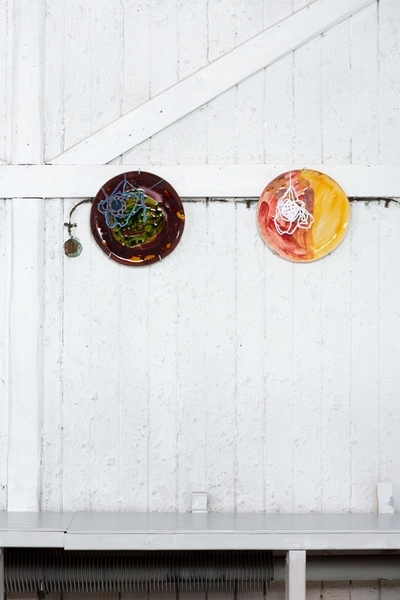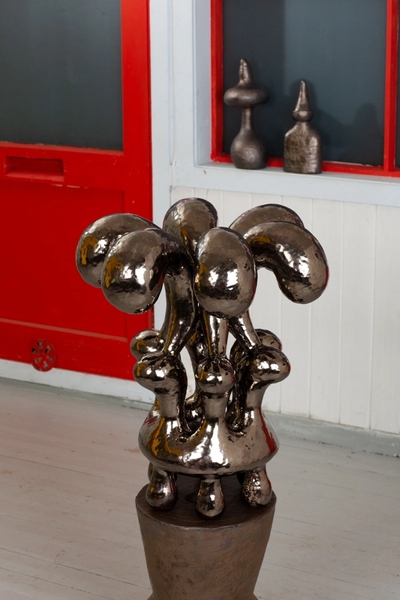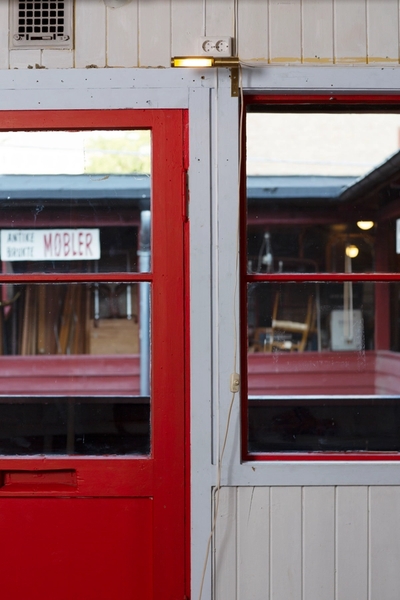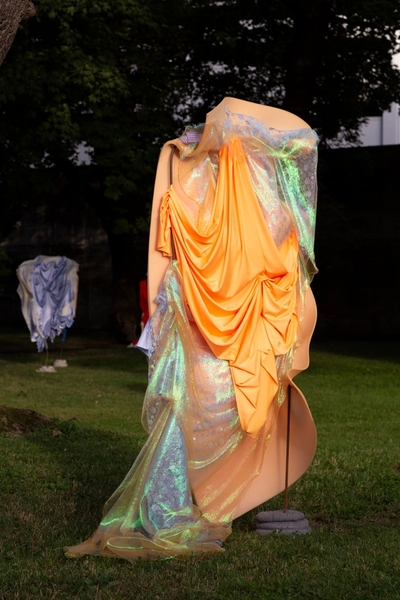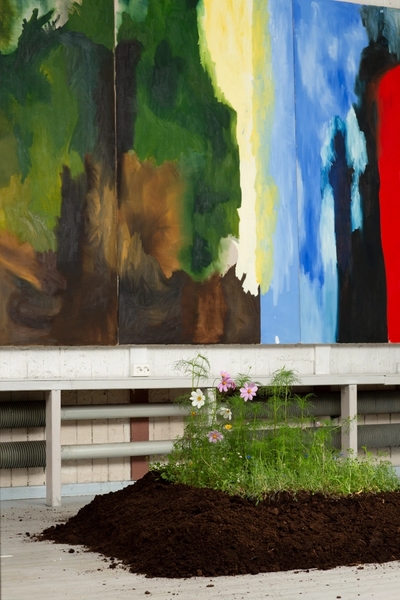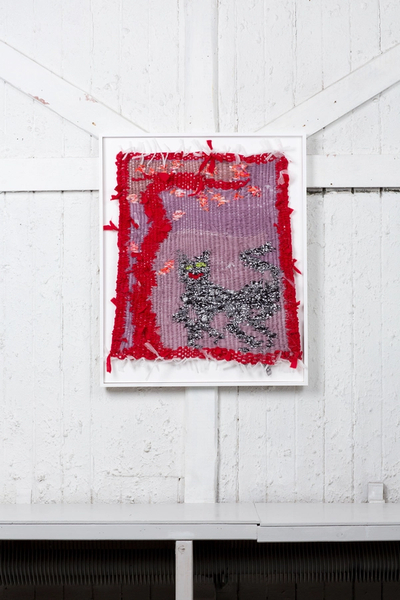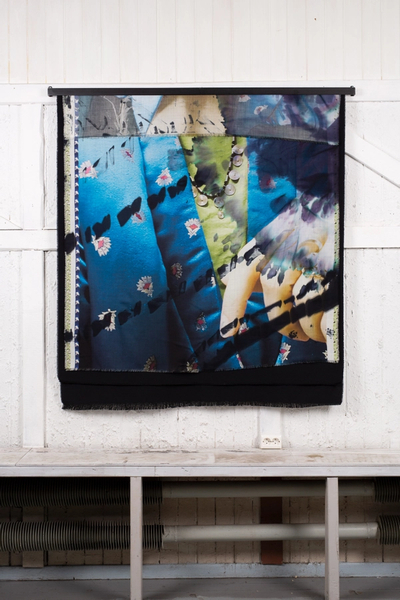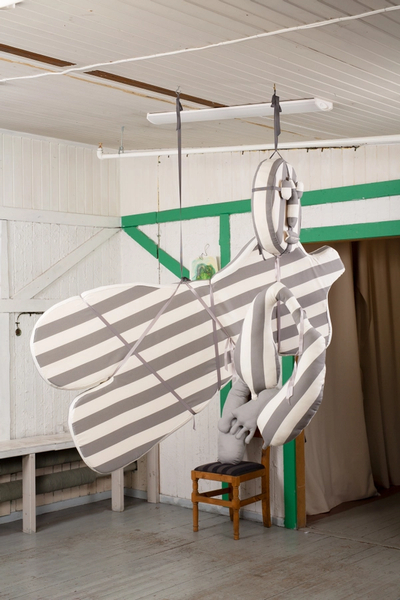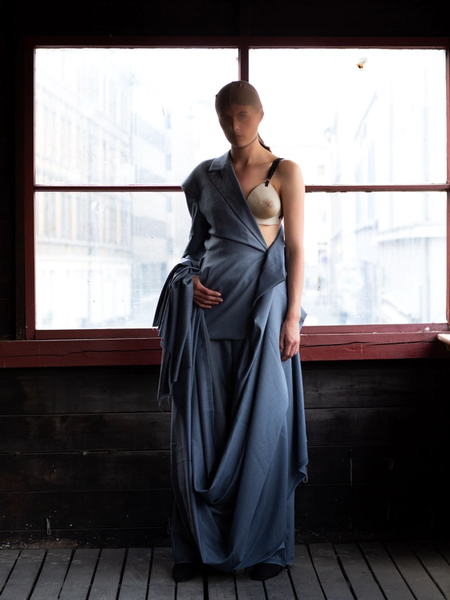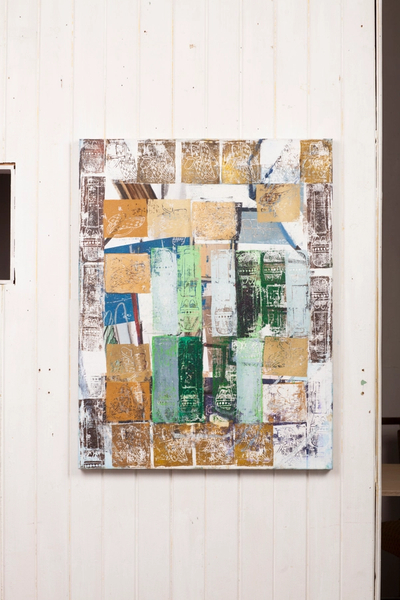Mathilde Carbel
Boneyard Bloom
03/05/2025—21/06/2025

"Leon" (løvetann, mølkebøtte), 2025
Aluminium
21 x 29,5 cm
NOK 8 000

Installation view

"Omman" (Rose), 2025
Alumnium
21 x 29,5 cm
NOK 8 000

"Thyra" (Artiskok), 2025
Aluminium
21 x 29,5 cm
NOK 8 000

Installation view
Boneyard Blooms
Graveyards are like gardens.
With human fertilizer.
"Plant your own gardens and
decorate your own soul,
instead of waiting for someone
to bring you flowers.”
Well, in the graveyard of our
loved ones,
we do all of the above.
We instantly become gardeners
of planes and pastures we never
asked to tend.
And first and foremost
we provide flowers.
Both cut and arranged and given
as gestures.
But over time,
also planted and tended and mended
these strange petals and stems that loom larger,
that help the voice
when words fail
or feel frail.
Those petals,
that at times bloom again
and make the underworld
overflow.
Then there is
Domino
the old game
with its boneyard of unturned
pieces
in the random matrix of matter.
Both holding the lost,
the loser,
and the unturned tiles.
Carved still, like we all do each
other
even when buried
in this boneyard garden,
with flowers overflowing.
Not forgotten
but never fully known,
what happens after death
and what death has sown.
-Mathilde Carbel
Mathilde Carbel’s exhibition titled
can be translated as “Flowers for the Dead,” and serves both as a tribute to eleven individuals and as an alternative, engraved gravestone—or perhaps more accurately, a bouquet that never withers. Each flower represents a person who is no longer with us, yet still flourishes in the artist’s memory. Aluminum was deliberately chosen as the material because, unlike organic flowers, it does not decay. These flowers thus stand as lasting testaments to loss, love, and remembrance.
In the preparatory work for the project, Carbel spoke with Helge Klingberg, who authored the Norwegian cemetery regulations in
Kirkegårdsboka(1997). He reminded her that the cemetery is also a garden—a place where we plant our dead and watch their memory grow side by side with flowers, shrubs, and longing.
The work is rooted in a series of symbolic gestures and layers of meaning. Surrounding the flowers is a structure inspired by domino tiles. Many associate them with the idea of the domino effect, but in the original Chinese game, the tiles are about numbers and probability. In English, the pile of unused domino tiles is called the
boneyard—the graveyard. It is where the unused tiles rest. As a metaphor for the unknown, the unanswered, and all we cannot know—but which remains part of life’s game—the work reflects how the dead continue to bloom and live on within us.
The flowers are hand-drawn, then digitally processed and cut from aluminum using CNC technology. This interplay between the hand-drawn and the machine-made underscores the tension between the human and the technological, the ephemeral and the enduring.
The project is also Carbel’s attempt to open a conversation about our disoriented relationship with death in contemporary society—along with an effort to create new language and rituals for our loved ones, and for the voices we will inevitably lose as time passes, but still wish to remember and hold on to.
The exhibition is kindly supported by Arts and Culture Norway.
Mathilde Carbel (b. 1990, Denmark) is an artist, curator, and writer based in Oslo. Her practice weaves together visual art, curating, and critical writing, often exploring themes such as memory, identity, and the interplay between art and societal structures. This is exemplified in her lecture
"A & B all the way to Z (an unexpected ode to wrestling)"at the National Museum in Oslo (2023), where she examined the relationship between art and sport through Carroll Dunham’s wrestling motifs.
Carbel studied at the Central Academy of Fine Arts (CAFA) in Beijing and later at Goldsmiths, University of London. She has exhibited at venues such as Destiny's Atelier (2017) and
ARIEL – Feminisms in the Aestheticsin Copenhagen (2019). She curated exhibitions at BO gallery (2022) and contributed to Kunsthall Oslo’s programming from 2016 to 2022. Additionally, she co-founded the artist-run exhibition space Pachinko together with Kristian Schrøder.
